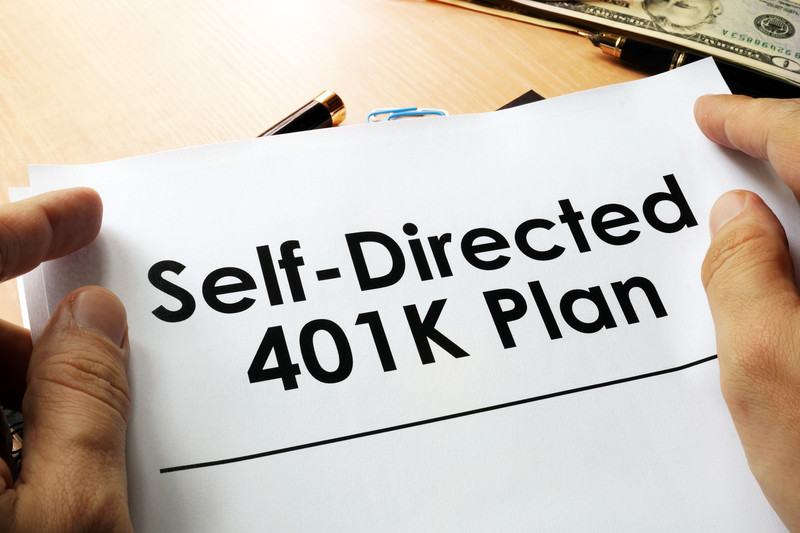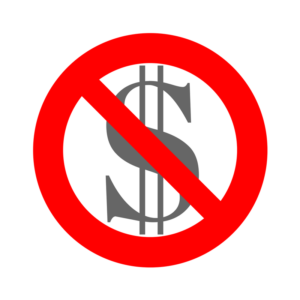
The IRS list 15 different types of Retirement Plans available for 2018 (https://www.irs.gov/retirement-plans/plan-sponsor/types-of-retirement-plans) and a host of options for implementing those plans. Most Americans have probably never heard of many of these options but arguably most of us are aware of the 401(k) plan option. One flavor of 401(k) is the Solo-k also referred to as an Individual-k, Uni-k, or a One-Participant k.
What is a Self-Directed (Solo-K) 401(k) Plan?
A Solo 401(k) plan is a specific type of 401(k) plan designed for self-employed individuals and their spouses who have no full time employees. 401(k) plans are sponsored by an employer and a Solo 401(k) is no different except that the employer is your company if you have a legal entity such as an LLC, or it can be you as a self-employed individual. You must however, be earning income or be able to otherwise prove you are in business. Like all 401(k) plans, contributions to the plan are deferred wages so you must be paying yourself a wage in order to make contributions.
Congress amended the Internal Revenue Code (IRC) in 1979 adding section 401(k) which took effect in 1980. Adoption of 401(k) plans was only moderate until 2002 when the Economic Growth and Tax Relief Reconciliation Act of 2001 (EGTRRA) took effect making the plan much more attractive.
Many employer sponsored 401(k) plans limit your investment options to a pre-determined menu of options defined by your employer. A Solo-k plan allows you to broaden your options to include alternative assets such as real estate, promissory notes, and precious metals as well as the typical mutual funds, stocks, etc.
Am I eligible for a Solo-K?
Solo 401 (k) retirement plans are suited for business persons who do not have full-time employees. The plan also covers spouses, but if a business adds employees then the plan must be converted to a more suitable 401(k). A Solo-K is an excellent option for consultants, sole proprietors or independent contractors. For an individual to be eligible for a one-participant 401 (k) plan, they must meet the following two requirements;
1 – The presence of a self-employment activity must be established (you are self-employed)
A self-employment activity includes owning and operating a Sole Proprietorship, an S Corp, a C Corp, Limited Liability Corp or Limited Partnership. Your business should intend to generate revenues and be able to make contributions to the plan.
There is no specific requirement on how much revenue your business generates or how soon the contributions will begin. If you are able to show that you are a legitimate business focused on generating revenue for profits you qualify to adopt a Solo 401(k) plan. There is also no requirement that this be your only business, or even your only qualified retirement plan. You can still be a W2 employee working for someone else and you can have a separate 401(k) with that employer under their plan. Contribution limits and loan limits are combined though between both plans so you don’t get to save twice as much or borrow twice as much just because you have two plans.
2 – You cannot have any full-time employees
You cannot have any full-time employees in your business other than you and your spouse. This is because the IRS considers the person owning the business and their spouse to be “owner-employees” as opposed to “employees.” The same is not true if the parties are not married.
A full time employee in a business is one that works for the business for at least 1000 hours in a year. In some cases non-resident aliens and persons under 21 can be excluded in the plan eligibility. You should check with you CPA, Tax Attorney, and/or plan provider to ensure you are meeting eligibility requirements.
Checkbook Control Option
With a Solo 401(k) you have the option to either hire a bank or other financial institution to act as custodian or to have checkbook control. Under the first scenario, the financial institution holds your Solo 401(k) funds in a trust on behalf of the plan. When you want to make an investment you send a request to the custodian to send a check from your plan trust account. This typically adds a day or two to the process.
With checkbook control you open a checking account in the name of, and under the TIN (Trust Identification Number) of your plan trust at a bank or financial institution. When you want to make an investment you simply write a check.
What are the benefits of having a Solo 401 (k) Retirement Plan?
High Contribution Limit
In addition to alternative investment options, a Solo-k allows you to contribute up to $61,000 in 2018 if age 50 or over, $55,000 if under 50. This is because the contribution limit for individuals is $18,500 under 50 + $6,000 “catch up” contribution over 50. However, the employer (you) can match contributions up to $55k / $61k combined contribution limit. By comparison, the contribution limit for a Solo IRA is $6,500 in 2018.
The Loan Feature
You can borrow the lesser of $50,000 or 50% of your plan assets for any purpose at low interest rates. You are required to pay back the loan over a period of no more than five years and you must make at least quarterly payments. You set the interest rate, and you are paying the interest into your own plan.
Roth contributions
Solo 401(k) accounts have a built-in Roth sub account so you have the choice to make your contributions on a Traditional or Roth basis without the income restrictions of a Solo IRA.
Checkbook Control
Checkbook control plans offer simplicity and speed in making investment decisions. It’s as simple as writing a check.
Exemption from UDFI
UDFI is Unrelated Debt Financed Income which arises from using leverage to purchase plan assets. A Solo-k plan allows you to use leverage to purchase assets as long as the transaction is structured correctly. Most notably, any loans on plan assets must be non-recourse loans meaning the lender could only go after the purchased asset, not the plan itself. There are other restrictions such as you cannot offer a personal guarantee so be sure to discuss with a qualified professional before entering into any such arrangement.
Cost Effective Administration
Solo-k plans with less than $250,000 in assets are not required to file complicated annual reports. Above $250,000 in plan assets typically files a form 5500EZ which is a simple two page form. Note though that just because the annual filing requirements are not onerous, you are required to keep diligent records of every transaction in your plan.
Real Estate Investing With Your Solo 401(k)
You can rehab houses with your Solo 401(k) but all profits must go back to the plan. There are many other “gotchas” to be aware of so don’t just jump right in. Ensure you are fully aware of where the lines are and how not to cross any of them. One of the big issues is that retirement plans are designed for passive investing, not active. This is because tax-exempt entities like 401(k) plans (and non-profit organizations) have a competitive advantage over for profit businesses which is unfair. Congress recognized this way back in 1950 and changed the rules so that if you use your tax-exempt status to run a business you will trigger UBIT – Unrelated Business Income Tax – so your gains are taxed just like a for profit business.
You can hold rental properties in you Solo 401(k) and this is a great strategy. Be aware though that there are significant rules about what you can and cannot do to avoid triggering UBIT. For instance, you cannot fix the property up or manage it yourself – those are active undertakings, not passive.
Because of the many advantages of a Solo 401(k) plan over other qualified retirement plans, it is a great option for self-employed individuals who want control over their retirement investments. The checkbook control option is best for those who want the flexibility and speed of having their 401(k) funds available and are comfortable with the responsibility that goes with being both the plan custodian and trustee.
There is however, a fair amount of learning-curve you must go through when deciding to open a Solo 401(k) and this is especially true for checkbook control accounts. If you do not thoroughly understand the rules – such as who is a disqualified person and the difference between active and passive investments – you could open your plan up to catastrophic penalties. Invest the time to educate yourself on the rules and always discuss your planned investments with your CPA, Attorney, or other qualified investment professional. It will be the best investment you will ever make.



